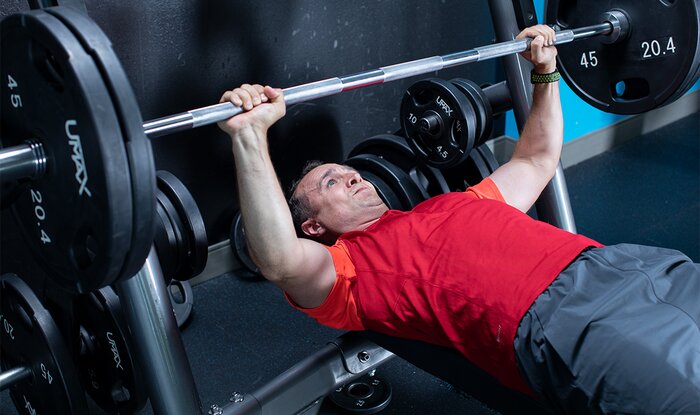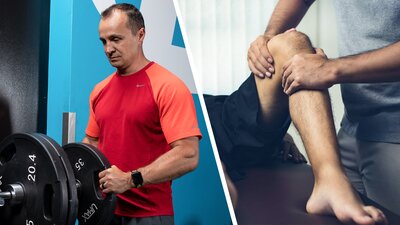Q: What can I keep doing while I'm recovering from knee surgery?
There's an interesting aspect of human behavior called "the missing tile syndrome." Basically, when a ceiling tile is missing, we don't notice the hundreds of intact tiles. Instead, our eye immediately zeros in on that single missing tile. Put another way, we're wired to notice what's wrong rather than what's "right."
In the fitness world, this means our first impulse is always going to be to fixate on problems and overlook workarounds that still, well, work. In order to obtain better perspective, we must train ourselves to proactively seek out the "hidden" upsides of unfortunate circumstances.
So, you've just had knee surgery, for example. Yes, that's unfortunate, and the pain and struggle that go with it are very real. Let's not understate that. But this misfortune also comes with two potential upsides:
- You're on the path to your knee feeling better than it did before the surgery.
- This is an opportunity to focus on other exercises and/or muscle groups.
How is that second one an opportunity? Ordinarily, it's very difficult to improve all body parts simultaneously, because when you're training every single muscle "balls out," the total accumulated fatigue often exceeds your body's ability to successfully recover from it.
Competitive bodybuilders have known this for decades. This is why they often alternate between "specialization" phases for the purpose of improving lagging muscle groups.
In practice, after selecting the muscle(s) you want to target for specialization, you'd first reduce the amount of work you perform on all other muscles. This volume reduction frees up recovery resources, allowing you to perform and successfully recover from greater-than-normal training volumes for the muscle you've targeted for specialization.
In the case of the knee, the opportunity for your other body parts is even greater, since you won't be training anything involving legs to any great degree for some time. This frees up even more recovery resources compared to a traditional specialization phase.
Find What You Can Do and Do It!
In the case of the knee, you can still train the arms, chest, shoulders, core, and abs, with some necessary modifications and substitutions along the way.
For example, standing military presses are probably off-limits for now, but there's nothing wrong with seated presses. In fact, because they force you to lift more strictly, you might find they're ultimately more effective. And you can still do all manner of seated dumbbell raise variations. Sounds like a decent way to grow your shoulders to me.

Likewise, bench presses at any significant weight probably won't feel good on your knee, but you can likely still perform what's known as a Larsen press. This is a bench press with zero leg drive whatsoever because your legs are actually in the air or resting very lightly on the ground. It's a very strict press, and your ego will take a hit, but it'll probably make you a better bencher in the long term. You can also do incline presses with your feet off the ground or resting lightly, in addition to flyes and lighter dumbbell work.
The main point: Whatever your injury situation is, it's almost guaranteed that some beat-up powerlifter, bodybuilder, or other athlete has been there before and figured out how to keep training. Use your imagination, use the internet, and you'll discover there is no shortage of movements out there that may still be OK for you. You may have simply ignored them in the past because you didn't think you needed them.
Don't Let Your Favorites Become Your Enemies
On a related note, here's an important insight I've discovered abut chronic injuries in active people—particularly lifters. Our nagging orthopedic injuries almost always involve joints associated with our favorite—and therefore overdone—exercises, activities, and/or muscle groups. Of course, your case may be special, but it's something worth keeping for the future regardless.
Bench press fanatics with bad shoulders are a classic case in point. But here's the upside in this: Your best muscle groups are the ones that are least likely to atrophy when you stop training them for a while, due to their long and intense training history.
So while surgery and rehab are definitely frustrating, I want you to seize the opportunity to improve your upper body as much as possible while your knee recuperates. When you're all healed up, your lower body will come back faster than you imagine.

